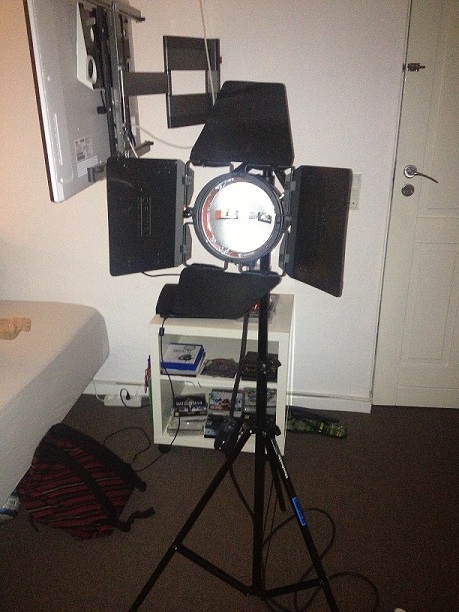It was sort of touched upon above, but you want to ask yourself the following when lighting the scene:
QQMD: Quality of light, quantity of light, mood, and direction
PITS: Placement, intensity, texture, spread
DEC: Depth, exposure, contour.
You want to first block the scene, compose the shot, then expose with lighting that way you know exactly what's feasible as far as placement of the lights given your staging, and vice versa. QQMD, what sort of light am I gauging? This case daylight coming in from outside, which also answers the quality that you want to match. You already answered the mood of the scene, so your lights should reflect that. You probably dont want a high contrast ratio (something like a noir look) for a lighter comedy. And direction. What direction is the source of my key coming from? If you're establishing windows, chances are the sun is what you want to mimic as your key, which thus effects your placement of the key light.
PITS, Where am I placing the light? Again, answered dependent on your blocking, and the questions answered above. Intensity? How intense do you want the light. Is it a hard light with harsh shadows you want? Or a soft light with very diffuse shadows? Texture. Are you going for a wash over the character, eliminating the little details? Look for ways to add texture to the scene, or to highlight texture to give more depth and detail to your shot. Detail is always good. Spread. What's the spread of the light? Is it a direct beam through a doorway that give a very direct shaft of light, or an overall exposure for the room?
DEC. Depth. Always light for the farthest vista you will see. In the scenario described that's probably a wall or a hallway. Light those first highlighting detail, and nice shadows. Exposure. March your way forward to the next subject and light it. In this case if it is your actor, get him exposed to your desired Footcandles or Stop. This will include adding his/her key light, the fill (If marching forward, you will already have placed a backlight or side-kicker.) Contour. Use flags, cutters, things to shape the face to introduce contour and remove flatness. You want dimentionality in the face (think of it broken into four segments: one for each eye, one each for the lower parts of the face.) You want something different happening in each part of the face. That could be adding some highlights, or using cutters/fingers to remove spilled light and create some shadows along the jaw, etc. Play around with it.
But those are the basic questions you want to ask yourself when lighting a scene, and that'll let you know when you are set and ready to roll camera.





